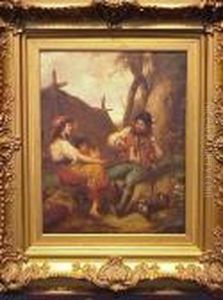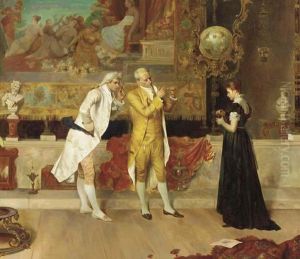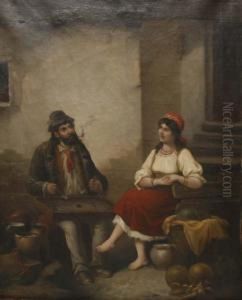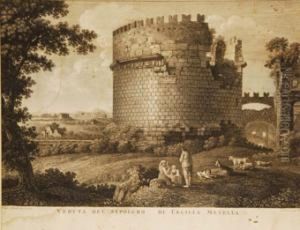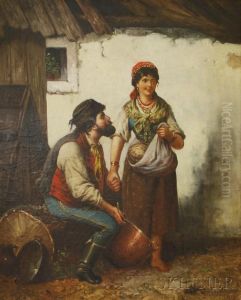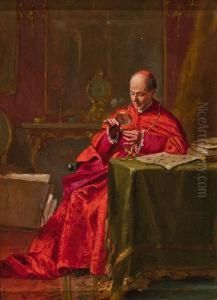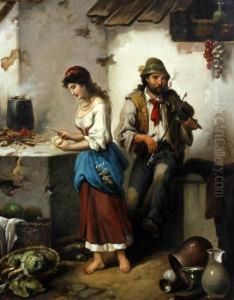F. Morelli Paintings
Filippo Morelli, known as F. Morelli, was an Italian painter born in 1836 in Naples, Italy. He is often associated with the Italian school of painting, which was characterized by its emphasis on traditional techniques, historical and religious subject matter, and a strong sense of nationalism during the period of Italy's unification. Morelli's work is less known internationally compared to other Italian artists of his time, and as such, there is a limited amount of information available about his life and career.
F. Morelli's artistic journey began in his hometown, where he likely received his initial training. He was part of the vibrant Neapolitan art scene, which was an important cultural hub in the 19th century. Morelli's style was influenced by the Romantic movement, which was prevalent during his early years, and he incorporated its emphasis on emotion and individualism into his work.
Throughout his career, Morelli produced a variety of works, including historical paintings, portraits, and religious scenes. His work was appreciated for its attention to detail, use of color, and expressive characters. Although he did not gain the same level of fame as his contemporaries, such as Francesco Hayez or the more avant-garde Macchiaioli group, Morelli's paintings were well-regarded by his peers and collectors in Italy.
Morelli's contributions to Italian art were part of the larger tapestry of the 19th-century painting, which saw significant developments and the emergence of new artistic movements. Despite the lack of extensive records on his exhibitions and sales, it is likely that his paintings were displayed in various Italian art shows and possibly even abroad, as was common for artists of his time.
F. Morelli died in 1901, leaving behind a legacy that, while modest in comparison to the great masters, still reflected the rich cultural and artistic traditions of Italy. His paintings remain as a testament to the skills and themes that were cherished by Italian artists of the 19th century.
